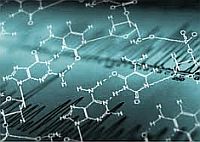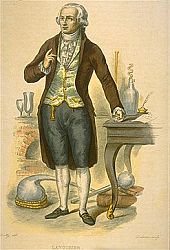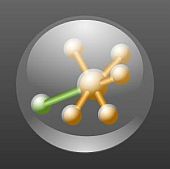

|
|
General Science Biology Physics Chemistry |
Astronomy/Astrophysics Geosciences/Environment Mathematics/Computer Science |
|
Evaluating Web Pages: Techniques to Apply & Questions to Ask | Berkeley Great Web Sites for Kids Selection Criteria | American Library Association How To Evaluate Web Resources "A guide to help students quickly evaluate the credibility of any resource they find on the internet." News Literacy Project Our mission: The News Literacy Project empowers educators to teach students the skills they need to become smart, active consumers of news and other information and engaged, informed participants in civic life. 6 Signs of Credible Sources: Do Unreliable Websites Sabotage Your Research? Pointers for Searching, Searching for Pointers The File Guide: Difference Between JPG, PNG, EPS, PDF, PSD, AI, GIF, TIFF
For Writers: Converting Words to Pages |
|
|
"I was like a boy playing on the sea-shore, and diverting myself now and then finding a smoother pebble or a prettier shell than ordinary, whilst the great ocean of truth lay all undiscovered before me." -- Sir Isaac Newton -- |
|
Online Schooling - Home Schooling Free E-Books Encyclopedias E-Prints, Preprints, Journals, ..... Science News |
"Understanding means seeing that the same thing said different ways is the same thing." |

Search 13,155 of our digitized items: artifacts, photographs, advertisements, letters, rare books, oral histories, and more.
The World Science Festival is a production of the Science Festival Foundation,
a 501(c)(3) non-profit organization headquartered in New York City.
The Foundation's mission is to cultivate a general public informed by science, inspired by its wonder,
convinced of its value, and prepared to engage with its implications for the future.
Brian Greene and Carlo Rovelli
World Science Festival co-founder and Columbia University physicist Brian Greene gives a fuller explanation of what a neutrino is. Brief Videos
On October 6, 2015, Takaaki Kajita of the University of Tokyo and Arthur B. McDonald of Queen's University in Canada won the Nobel Prize in Physics for having discovered that the wispy, ghost-like particles known as neutrinos have mass.
The International Council for Science (ICSU) is a non-governmental organisation with a global membership of national scientific bodies (120 Members, representing 140 countries) and International Scientific Unions (31 Members).
Science.gov is a gateway to government science information and research results. Currently in its fifth generation, Science.gov provides a search of over 55 scientific databases and 200 million pages of science information with just one query, and is a gateway to over 2100 scientific Websites.
A consumer advocacy organization whose twin missions are to conduct innovative research and advocacy programs in health and nutrition, and to provide consumers with current, useful information about their health and well-being.
The Office of Science is the single largest supporter of basic research in the physical sciences in the United States, providing more than 40 percent of total funding for this vital area of national importance. It oversees -- and is the principal federal funding agency of -- the Nation's research programs in high-energy physics, nuclear physics, and fusion energy sciences.
... a gateway to over 35,300 websites and databases worldwide, containing over 5.5 million e-prints in basic and applied sciences.

release joint publication on climate change | February 27, 2014
Excerpt: "The European Science Foundation acts as a catalyst for the development of science by bringing together leading scientists and research funding agencies to debate, plan and implement pan-European initiatives."
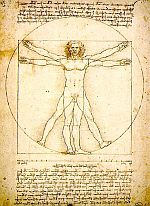
Project MUSE is a leading provider of digital humanities and social science content for the scholarly community.
For over seven decades, our dedicated and celebrated scientists have focused on inspired research,
collaborating across borders and disciplines to discover visionary solutions to humanity's most pressing issues.
The Federation of American Scientists is engaged in analysis and advocacy on science, technology and public policy for global security.
SciLine is an editorially independent, nonpartisan, nonprofit service for journalists and scientists.
Short Films, Big Ideas is an award-winning series of 30 three-minute stories about innovators--people who are reshaping the world through act or invention--directed by the world's most celebrated documentary filmmakers.
TheSchoolRun gives you all the tools you need to understand what and how your child is learning at primary school.
Students ask the questions, UCSB Scientists answer them.
This is a comprehensive site providing thousands of downloadable Video lectures, Live Online Tests,etc in the fields of Biology, Physics,
Chemistry, Mathematics, Computer Science, etc. Free Video Lecture Courses are offered by reputed universities and faculty on variety of subjects.
With our three lesson plan templates, educators can create and fill out a lesson plan with a professional design
for their math, science and language arts courses, and download them in PDF or MS Word format with a single click.
World's largest digital library of education resources
For students, parents, teachers, scientists, engineers and mathematicians. More than 14,000 Science Resources sorted by Category, Subcategory, and Grade Level.
Numericana.com is the online companion to Dr. Michon's upcoming "Numericana" book, presenting the recreational and serious sides of
mathematics and physics to a wide audience of scientists, engineers, teachers, parents, students and adults teaching themselves Science.
The Feynman's Lectures on Physics are based on a famous course of undergraduate lectures given at Caltech by Professor Richard Phillips Feynman in the early 1960's. What Dick Feynman had to say to undergraduates about various physical units was considered too trivial by the editors and was not included in the published version of these lectures. We resurrect it here, from the audio record, as a tribute to Richard P. Feynman.
By Alexander Krauss | PDF File (19 pages) | Cell.com
A collection of annotated research papers and accompanying teaching materials.
More than 72,000 libraries in 170 countries and territories around the world have used OCLC services to locate, acquire, catalog, lend and preserve library materials.
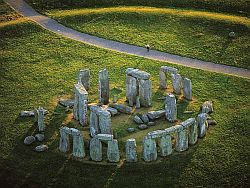
A Journey in prehistoric Art of the Lascaux and Chauvet Caves of Southern France
Documentary of artist Ardis Harsche, and her Cave Paintings series created using Encaustic Painting techniques.
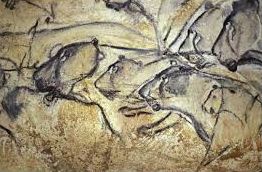
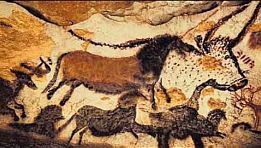
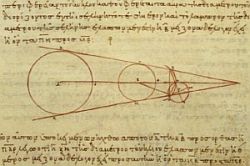
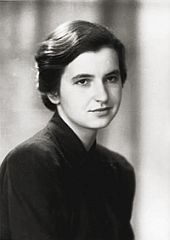

| TWOWS is the first international forum uniting women scientists from the South with the objective of strengthening their role in the development process and promoting their representation in scientific and technological leadership. |
| For more than 45 years, the Abdus Salam International Centre for Theoretical Physics (ICTP) has been a driving force behind global efforts to advance scientific expertise in the developing world. |
| OWSD, formerly TWOWS, is the first international forum uniting women scientists from the developing and developed worlds with the objective of strengthening their role in the development process and promoting their representation in scientific and technological leadership. |
| "This is the primary reason why we have launched ToBecomeATeacher.org -- to offer would be educators an easy to navigate online platform that will help them learn more about specific teaching careers, along with arming them with the proper tools and tips to achieve their goal of becoming an educator." |
| "TFA is a national teacher corps of recent college graduates who commit two years to teach and to effect change in under-resourced urban and rural public schools." |
| Teach For America (TFA) is a nonprofit organization whose stated mission is to "enlist, develop, and mobilize as many as possible of our nation's most promising future leaders to grow and strengthen the movement for educational equity and excellence." |
| The mission of The Science Network (TSN) is to build an online science and society agora, or public square, dedicated to the discussion of issues at the intersection of science and social policy. |
| Science.gov searches over 60 databases and over 2,200 scientific websites to provide users with access to more than 200 million pages of authoritative federal science information including research and development results. |

|
"Why seek the miraculous and supernatural beyond life?"
"The heart of biology is that it revolves around the pattern of connections between components."
|
|
The Nobel Prize in Physiology or Medicine 2016 The Nobel Prize in Physiology or Medicine 2016 was awarded to Yoshinori Ohsumi "for his discoveries of mechanisms for autophagy".
The Nobel Prize in Physiology or Medicine 2015
William C Campbell, Satoshi Omura and Youyou Tu win Nobel prize in medicine
The Nobel Prize in Physiology or Medicine 2014 Press Release | Press Release - PDF File
Nobel Prize in Medicine is Awarded for Discovery of Brain's 'Inner GPS'
The Nobel Prize in Physiology or Medicine 2013
For 3 Nobel Winners, A Molecular Mystery Solved Three Americans [James Rothman and Randy Schekman and German-born researcher Thomas Suedhof] won the Nobel Prize in Physiology or Medicine Monday for discovering the machinery that regulates how cells transport major molecules [hormones, enzymes and other key substances] in a cargo system that delivers them to the right place at the right time in cells. |
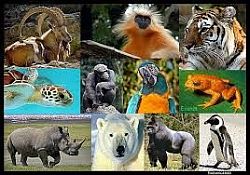

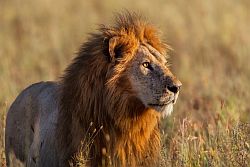
"Even such mental conditions as anxiety, attention deficit disorder, and obsessive compulsive disorder can be viewed through an evolutionary biology perspective as once-adaptive traits gone haywire in a modern world.
"Cancer, too, he writes, 'is actually an aberrant evolutionary process going on within a body.'"
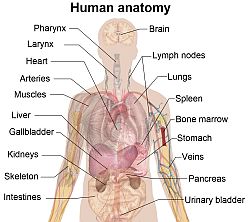
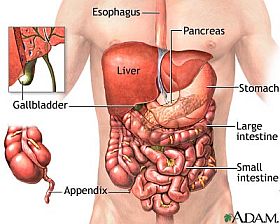
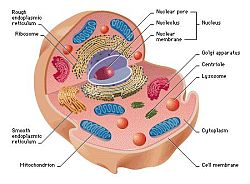

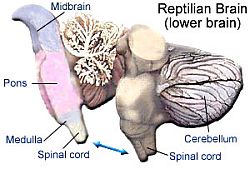

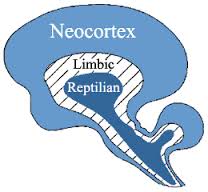

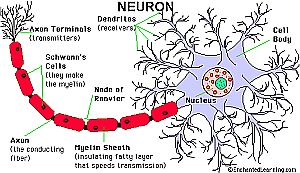
| This book explains the biological implications of DNA superstructure for readers who are presumed not to know higher mathematics. It is an introductory text, but not an elementary one, and will be valuable for molecular biologists at graduate student level and beyond. |
| The DNA Learning Center (DNALC) is the world's first science center devoted entirely to genetics education and is an operating unit of Cold Spring Harbor Laboratory, an important center for molecular genetics research. |
|
Mission: To create comprehensive reference maps of all human cells--the fundamental units of life--as a basis for both understanding human health and diagnosing, monitoring, and treating disease. There are about 37 trillion cells in the human body and each has its own specialized role. |
| A comprehensive cell atlas would make it possible to catalog all types and even subtypes of cells in the body, identify where in the body they reside, and even distinguish different stages of differentiation and cell states, such as immune cell activation. An atlas would also allow researchers to map cell lineages, such as tracing a red blood cell all the way back to its stem cell origins in the bone marrow. |
| Molecular biology is a branch of biology that deals with the composition, structure, and function of cellular molecules like proteins and nucleic acids essential for the cellular functions and mechanisms. |
|
Authors: Bruce Alberts, Alexander Johnson, Julian Lewis, Martin Raff, Keith Roberts, and Peter Walter Molecular Biology of the Cell is the classic in-depth text reference in cell biology. By extracting fundamental concepts and meaning from this enormous and ever-growing field, the authors tell the story of cell biology, and create a coherent framework through which non-expert readers may approach the subject. |
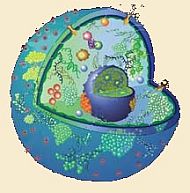
| Welcome to the BioTechniques Molecular Biology Forums, a science-based bulletin board for techniques, tips, and questions concerning molecular biology, cell biology, microscopy, and bioinformatics. |
|
Department of Biochemistry and Molecular Biophysics of the University of Arizona "It has been designed for biology students at the college level, but is useful for high school students, medical students, physicians, science writers, and all types of interested people." |

Organism: An individual form of life that is capable of growing, metabolizing nutrients, and usually reproducing. Organisms can be unicellular or multicellular. They are scientifically divided into five different groups (called kingdoms) that include prokaryotes, protists, fungi, plants, and animals, and that are further subdivided based on common ancestry and homology of anatomic and molecular structures. --- The Free Dictionary
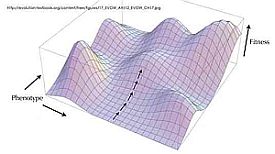
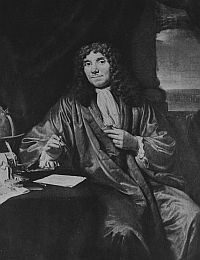

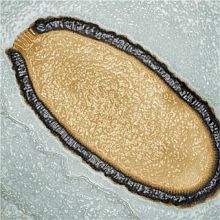
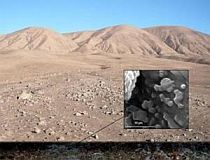
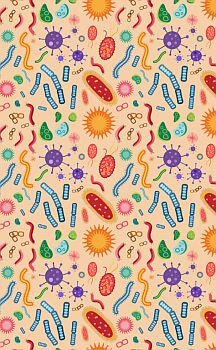
Above can be found a long list of E-Prints, Preprints, Journals, Articles, Archives, and Repositories

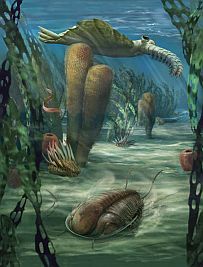
| Review: "Just under 20 pages each, these chapters are accessible, up-to-date, and authoritative summaries of the current status of the search for mechanisms of evolution. Sixteen color plates provide a visual perspective on the topics covered, all of which deal with multicellular organisms, plants, and animals, although the universal tree of life is discussed in several chapters."--Choice |
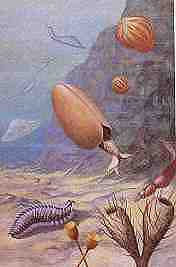
| "As in physics, also in biology, devolving interactions generate breaks of symmetry. Herein I will discuss briefly a few instances of symmetries and its breaks in biology that have played a central role in organic evolution." |
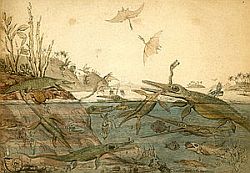
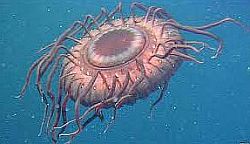
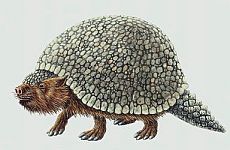
NEWS:

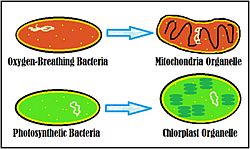

I. Bacteria (19): Most of the Known Prokaryotes
→ Click image to the right for larger version. →
II. Archaea (16): Prokaryotes of Extreme Environments
III. Eukarya (35): Eukaryotic Cells
| National Academies of Sciences, Engineering, and Medicine. 1999. Science and Creationism: A View from the National Academy of Sciences, Second Edition. Washington, DC: The National Academies Press. https://doi.org/10.17226/6024. |
|
Early life forms established a network of reactions for converting carbon dioxide into organic compounds. A non-biological system of reactions that could have formed the network's core on ancient Earth has been reported. |
| A mineralogist believes he's discovered how life's early building blocks connected four billion years ago. "Today there are about 4,400 known minerals—more than two-thirds of which came into being only because of the way life changed the planet. Some of them were created exclusively by living organisms." |

More resources on Genetic Engineering - Regenerative Medicine can be found on the Medical/Health Page.

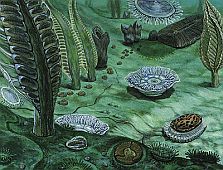
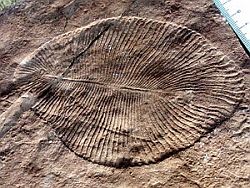
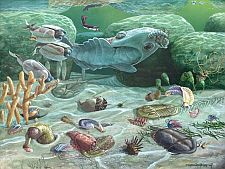
The Cambrian explosion was far shorter than we thought | Natural History Museum
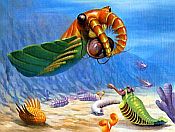
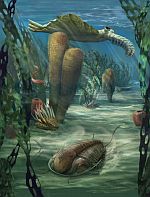

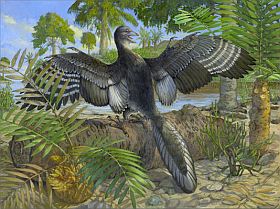
| "But not all scientists agree with the birds-from-dinosaurs link. Alan Feduccia, professor of biology at the University of North Carolina, is a noteable doubter. He believes most of them died out with the dinosaurs, about 65 million years ago. The ancestors of all today's birds evolved later, he says, between 65 and 53 million years ago, independently of the dinosaurs. This is the "big bang theory" of birds." |
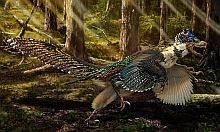
| "Textbooks say Archaeopteryx (far right: a fossil cast), which lived some 150 million years ago, was the first bird (left: an illustration by the ornithologist Roger Tory Peterson). But some paleontologists now say it may have been a feathered non-avian dinosaur." |
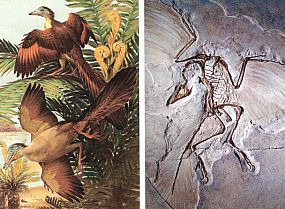

| During the Pleistocene Epoch (2.6 million to 11,700 years ago) lived a bird called Teratornis incredibilis. Though similar to the condors of today, it had a larger estimated wingspan of about 5 metres (16.5 feet) and was by far the largest known flying bird. |
| "Birds evolved from dinosaurs, and therefore are dinosaurs, in the same way that humans are a type of mammal." And again: "two bursts of diversification." |

| The Institute for Bird Populations is dedicated to understanding the abundance, distribution, and ecology of birds, and to facilitating scientifically informed conservation of birds and their habitats. |
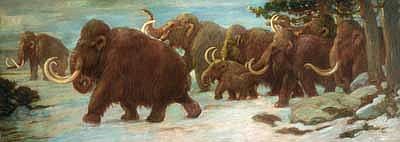

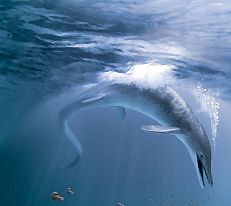

| The goal of the PALEOMAP Project is to illustrate the plate tectonic development of the ocean basins and continents, as well as the changing distribution of land and sea during the past 1100 million years. |


| Australia's ancient landscape holds clues to Earth's early history and the beginning of life. Aired April 10, 2013 on PBS. This is the first episode of a four-part series. |

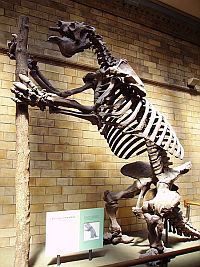
| Find profiles of prehistoric mammals, including the first mammals that co-existed with the dinosaurs, saber-toothed cats, prehistoric dogs, and the giant mammals of the Cenozoic Era. |
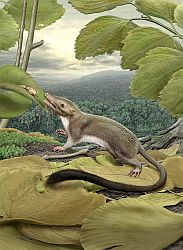

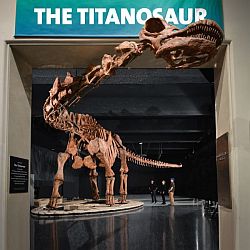

IPBES to launch 1st global assessment report on biodiversity and ecosystem services since 2005
IPBES: Nature's dangerous decline 'unprecedented,' species extinction rates 'accelerating' | May 6, 2019 - EurekAlert
Global biodiversity report warns pollinators are under threat | Feb., 26, 2016 - Nature
Living Planet Report 2024
Living Planet Report | PDF Download (94 pages)
NATURE IS DISAPPEARING: THE AVERAGE SIZE OF WILDLIFE POPULATIONS HAS FALLEN BY A STAGGERING 73%
Living Planet Report 2020 | PDF File
Living Planet Report 2018 | PDF Download Available (27 megs)
The Living Planet Index reveals that global populations of fish, birds, mammals,
The 83-page document, a collaboration with the Zoological Society of London, joins a growing and ominous list of
academic research and international reports warning that human activities are causing a steep decline in global biodiversity.
amphibians and reptiles declined by 58 percent between 1970 and 2012.
|
The following is an excerpt from The Diversity of Life, page 31, by Edward O. Wilson: "How long did it take for evolution to restore the losses after the first-order spasms? The number of families of animals living in the sea is as reliable a measure as we have been able to obtain from the existing fossil evidence. In general, five million years were enough only for a strong start. A complete recovery from each of the five major extinctions required tens of millions of years. In particular the Ordovician dip needed 25 million years, the Devonian 30 million years, the Permian and Triassic (combined because they were so close together in time) 100 million years, and the Cretaceous 20 million years. These figures should give pause to anyone who believes that what Homo sapiens destroys, Nature will redeem. Maybe so, but not within any length of time that has meaning for contemporary humanity." |
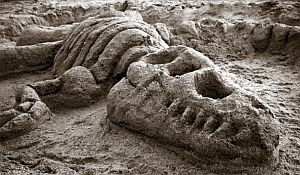
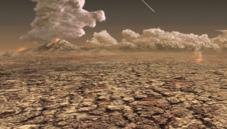

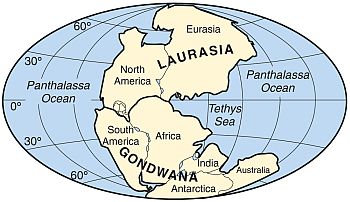

→ Click image to the right for larger version. →
→ Click image to the right for larger version. →
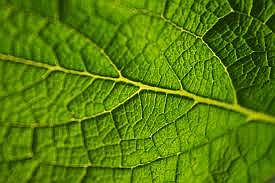
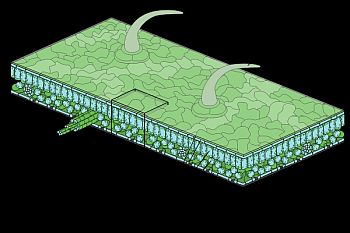
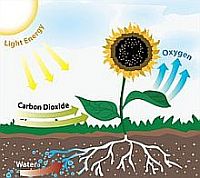
| From the world’s leading forest ecologist who forever changed how people view trees and their connections to one another and to other living things in the forest–a moving, deeply personal journey of discovery. |
| Forest Ecologist Suzanne Simard reveals that trees are part of a complex, interdependent circle of life; that forests are social, cooperative creatures connected through underground mycorrhizal networks by which trees communicate their vitality and vulnerabilities, and share and exchange resources and support. |

|
By Guillermo P. Murphy and Susan A. Dudley | Full Text | PDF available The ability to recognize kin is an important element in social behavior and can lead to the evolution of altruism. Recently, it has been shown that plants are capable of kin recognition through root interactions. |

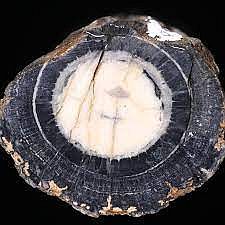
***************************
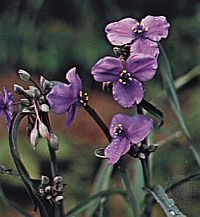
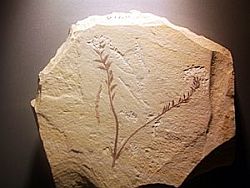
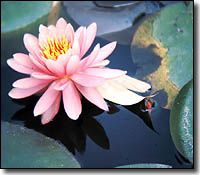
What is the smallest flower in the world? | Library of Congress
""Insects did just about everything first. They were the first to form
social societies, farm, and sing - just about anything you can imagine." -- Karl Kjer
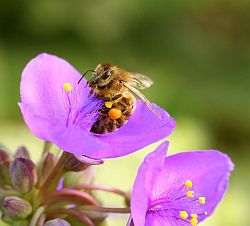
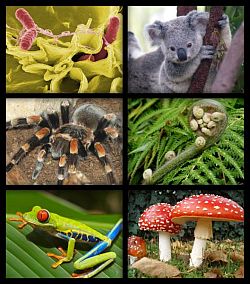
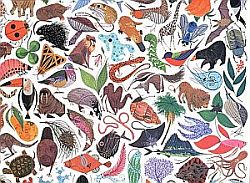
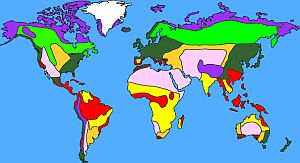
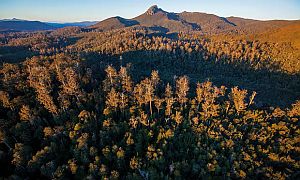

Living Planet Report 2018 | PDF Download Available (27 megs)

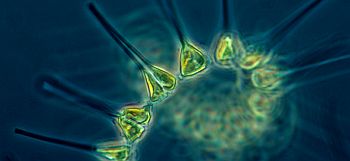
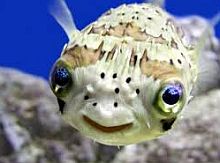

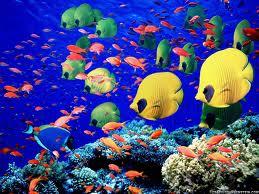



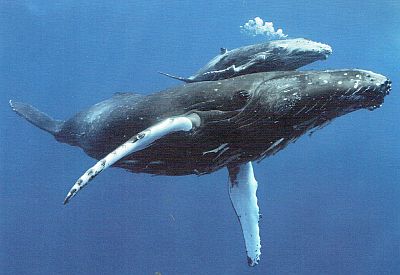
The Geosciences page includes a brief section on Coral Reefs.
Living Planet Report 2018 | PDF Download Available (27 megs)
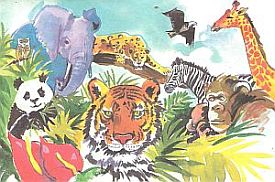
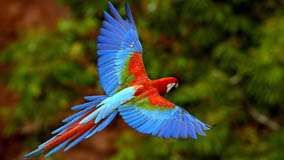
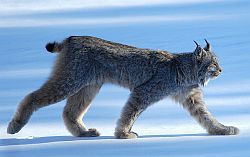
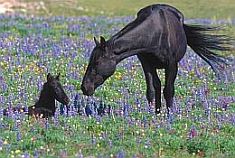
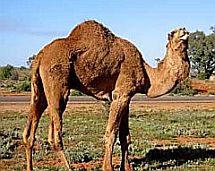
 |
 |
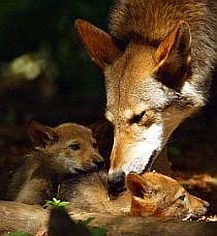 |
| "Although some late Ediacaran fossils may represent annelids, the oldest known fossil that is identified with confidence comes from about 518 million years ago in the early Cambrian period." |
| These giant earthworms average 1 metre (3.3 ft) long and 2 centimetres (0.79 in) in diameter and can reach 3 metres (9.8 ft) in length; however, their body is able to expand and contract making them appear much larger." |
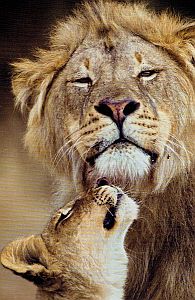
| The palaeontological record makes clear that the terrestrial verterbates evolved from lobe-finned fishes nearly 400 million years ago during the Devonian, and are therefore members of the Sarcopterygii. |

| Advances in genotyping and sequencing reveal that Earth's 31 small cat species hail from seven distinct lineages, each named for the first discovered species in the line. While modern cheetahs and pumas are large in size, they are genetically more closely related to small felines. |
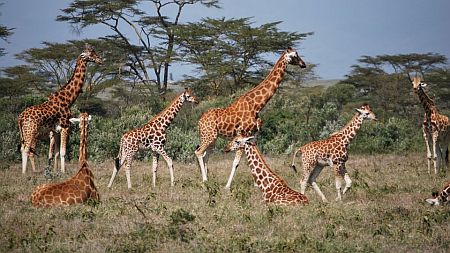
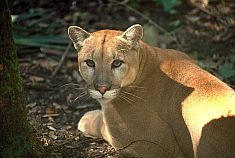
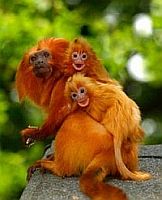
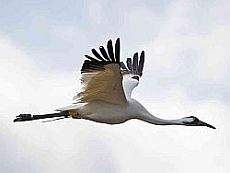
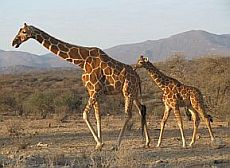
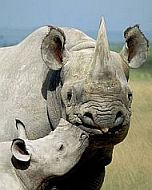

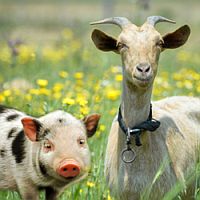


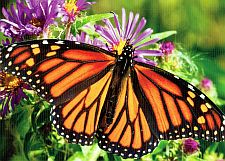
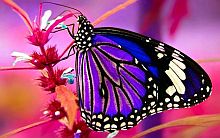
| By either measure, insects are the most successful life form in the 450 million-year history of terrestrial living. They had appeared at least by the early Devonian, and by the Carboniferous some 80 million years later had evolved into a diverse array of winged forms. |
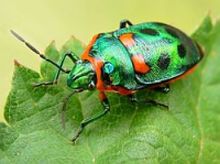
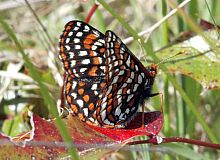
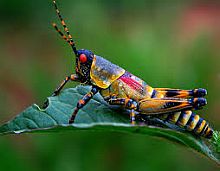
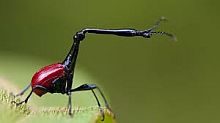

| Based on genome sequencing data, it is estimated that the class of insects originated on Earth about 480 million years ago, in the Ordovician, at about the same time terrestrial plants appeared. Insects evolved from a group of crustaceans. |
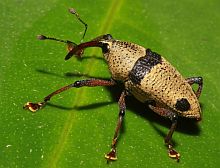


| Remarkable similarities in the chemical composition of the exoskeleton and in the ultrastructure of the compound eyes in organisms as diverse as millipedes, shrimp, and horseshoe crabs provide strong evidence that all of these groups (myriapods, crustaceans, and chelicerates) must have evolved from a common ancestor. |

| "The conclusion from all these data is that the common ancestor of annelids, insects and vertebrates (the common ancestor of protostomes and deuterostomes, for those keeping score) already possessed some brain structure, specified by this defined set of genes, which was involved in integrating sensory information and performing associative functions. The morphology and connectivity of this structure has diverged significantly in each lineage since then, but the underlying similarities in function remain." |

| What the researchers found is that insects originated at the same time as the earliest terrestrial plants about 480 million years ago, suggesting that insects and plants shaped the earliest terrestrial ecosystems together. |
| Find out everything there is to know about insects and stay updated on the latest insect research with the comprehensive articles, interactive features and insect pictures at LiveScience.com. |

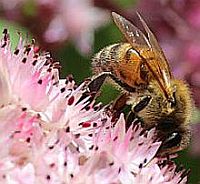
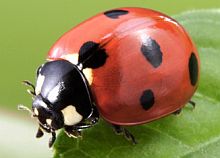
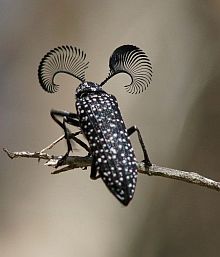
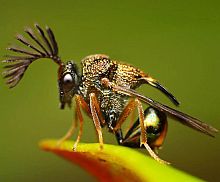
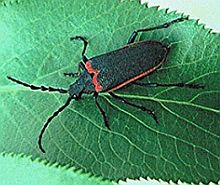
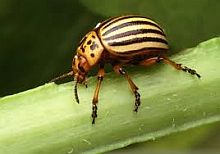

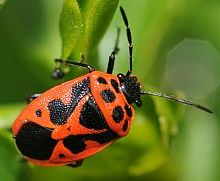
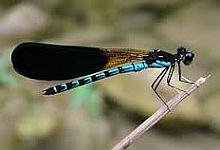



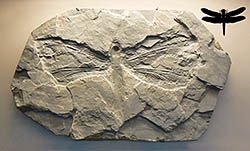


 |
 |
 |




 Monarch Journey
Monarch Journey
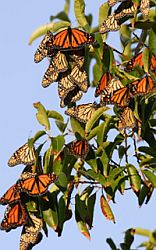

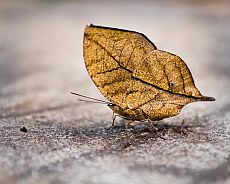
A person can do far worse with one's time than spending it enthralled by pictures of butterflies. The Thailand/Burma area, for instance, has a known number of butterfly species exceeding 3,000.

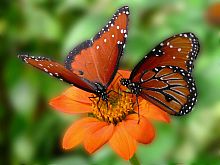


 PDF File | by Edward O. Wilson and Martin A. Nowak | PNAS
PDF File | by Edward O. Wilson and Martin A. Nowak | PNAS

|
"Most people who haven't been trained in physics probably think of what physicists do as a question
|
|
The Nobel Prize in Physics 2025 was awarded jointly to John Clarke, Michel H. Devoret and John M. Martinis "for the discovery of macroscopic quantum mechanical tunnelling and energy quantisation in an electric circuit"
Nobel Prize in Physics Is Awarded for Work in Quantum Mechanics | The New York Times Scientific Background to the Nobel Prize in Physics 2025 | PDF File (15 pages)
The Nobel Prize in Physics 2024
Nobel Physics Prize Awarded for Pioneering A.I. Research by 2 Scientists
Nobel physics prize 2024 won by AI pioneers John Hopfield and Geoffrey Hinton Associative memory (psychology) | Wikipedia
The Nobel Prize in Physics 2023
The Royal Swedish Academy of Sciences has decided to award the Nobel Prize in Physics 2023 to
Press Room
The Nobel Prize in Physics 2023 | PDF File
The Nobel Prize in Physics 2022 - Summary
Nobel Prize in physics awarded for breakthroughs in quantum mechanics
Nobel Prize in Physics Is Awarded to 3 Scientists for Work in Quantum Technology
The Nobel Prize in Physics 2021 - Summary
Press Release - PDF File
Trio of scientists win Nobel prize for physics for climate work
Nobel Prize in Physics Awarded for Study of Humanity’s Role in Changing Climate
The Nobel Prize in Physics 2020 - Summary
Nobel Prize in Physics Awarded to 3 Scientists for Work on Black Holes
Three scientists share Nobel prize in physics for work on black holes
The Nobel Prize in Physics 2019 - Summary Press Release | Press Release PDF File
Announcement of the Nobel Prize in Physics 2019 | Video - 1:00:26 - YouTube
The Nobel Prize in Physics 2018 - Summary Press Release | Press Release PDF File
The Nobel Prize in Physics 2017 Press Release | Press Release PDF File
2017 Nobel Prize in Physics Awarded to LIGO Black Hole Researchers
The Nobel Prize in Physics 2016 Press Release | Press Release PDF File
Topology Explained | ICTP: International Center for Theoretical Physics Strange Phenomena in Matter's Flatlands | PDF File | The Royal Swedish Academy of Sciences
Shocker: Nobel Prize In Physics Goes To Topology In Materials, Not Gravitational Waves!
The Nobel Prize in Physics - 2015 Neutrino 'flip' wins physics Nobel Prize | October 6, 2015 - BBC
Nobel prize for physics 2015: how neutrinos saved the world | October 6, 2015 - The Guardian
2015 Nobel Prize in Physics | October 6, 2015 - Scientific American
The Nobel Prize in Physics - 2014
Japanese and 1 American Share Nobel in Physics for Work on LED Lights
Invention of blue LEDs wins physics Nobel
The Nobel Prize in Physics - 2013 Press Release | Press Release PDF File
Tiny Particle Looms Large on Eve of Top Physics Prize
2012 Nobel Prize in Physics Awarded to Serge Haroche and David J. Wineland
Winners of the Nobel Prize in Physics 2016 - 1901 | Nobel Prize Internet Archive
|





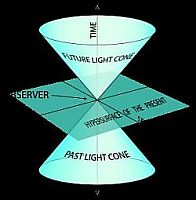
| Home of the American Association of Physicists in Medicine, American Association of Physics Teachers, American Institute of Physics, American Physical Society, and Niels Bohr Library. |
| IOP Publishing provides publications through which leading-edge scientific research is distributed worldwide. IOP Publishing is central to the Institute of Physics (IOP), a not-for-profit society. |
| "This guide is for early career researchers who are beginning to write papers for publication. ... This guide will provide an overview of academic publishing and advice on how to make the most of the process for sharing your research." |
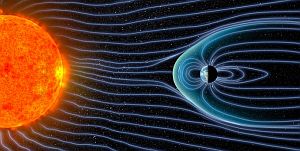

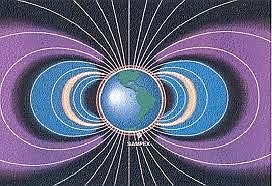
| "The SAO/NASA Astrophysics Data System (ADS) is a Digital Library portal for researchers in Astronomy and Physics, operated by the Smithsonian Astrophysical Observatory (SAO) under a NASA grant. The ADS maintains three bibliographic databases containing more than 9.7 million records: Astronomy and Astrophysics, Physics, and arXiv e-prints." |
| The first hints of 10 new moons appeared in March 2017 (two had been spotted earlier), and the signals were seen again the next month. But confirming orbits takes a while, and it wasn't until the team re-observed Jupiter in May that all the moons were confirmed, bringing the planet's total to 79. |
| "The importance of the Moon in studying the principles of geology is that it provides an insight into the basic mechanics of planetary evolution and events that occurred early in the solar system." |
| The giant impact hypothesis states that the Moon was formed out of the debris left over from a collision between the Earth and a body the size of Mars, approximately 4.5 Gya (four and a half billion years ago). |

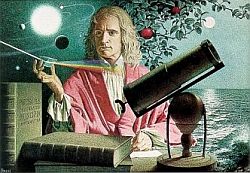

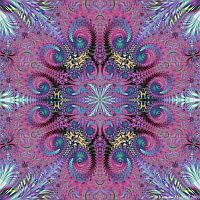







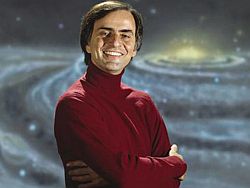

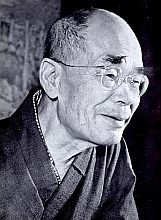
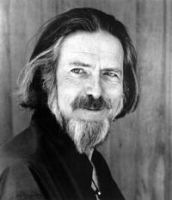
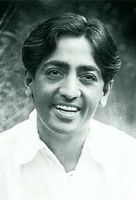

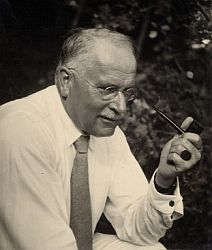
"The thoughts that one creates generate patterns at the mind level of nature."
William Tiller
"What we call our "thoughts" seem to depend upon the organization of tracks in the brain
in the same sort of way in which journeys depend upon roads and railways. The energy used
in thinking seems to have a chemical origin; for instance, a deficiency of iodine will turn a
clever man into an idiot. Mental phenomena seem to be bound up with material structure."
Bertrand Russel



| "Relativity theory gives a relationship predicting the increase of mass of relativistic moving particles, but no physical model has been given to describe the fundamental physical mechanism responsible for the formation of that additional mass. We show here that this additional kinetic mass is explained by a well-known mechanism involving electromagnetic energy." |
| Living Reviews are scientific open access journals, publishing review articles that provide insightful surveys on research progress in the fields they cover, and guiding readers to the most important literature in the field. |
Coulomb's Law | Matter/De Broglie Waves | Condensed Matter Physics
Quantum Hall Effect | Higgs Boson | Particle Physics - History of Discoveries
Dark Matter - Dark Energy




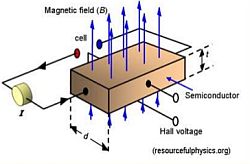
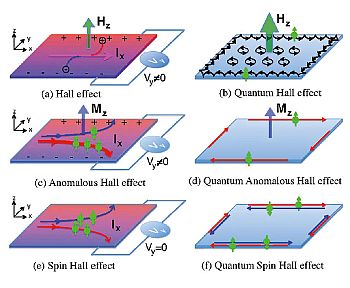


Nanotechnology and the means to create nanostructures is an interdisciplinary pursuit. As such, source material can be found in the sections on biology and chemistry as well as physics. And if I had a section on engineering, it would fall under that category also. Its implications and potential uses are profound and will no doubt dictate a great deal of future breakthroughs. Imagine, for example, a transistor consisting of a single electron. What would that do for the computer industry?
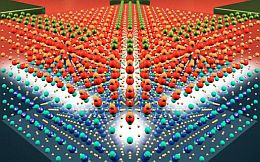
The file above--geometries.jpg--from: The Open Source Handbook of Nanoscience and Nanotechnology | Wikibooks


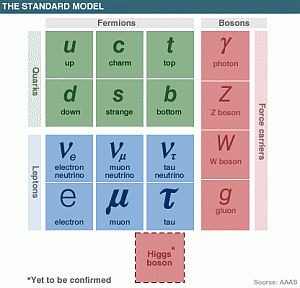
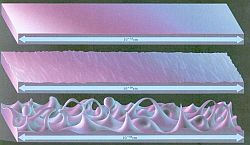
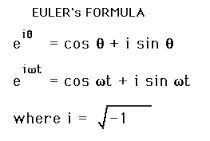
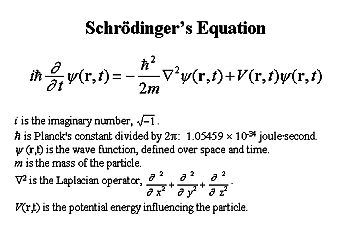
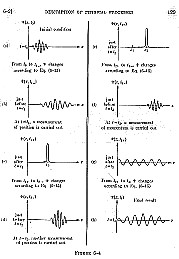
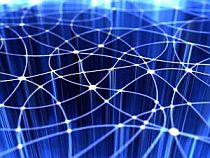
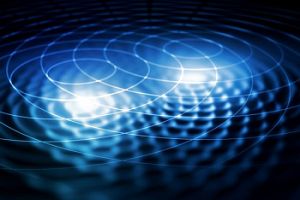
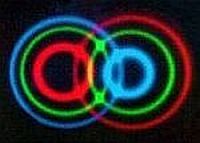
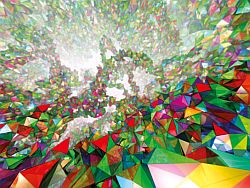
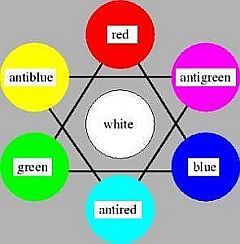
"Einstein's discovery is that gravity, which is a dynamical field, is the geometry of spacetime. Quantum mechanics teaches us that dynamical quantities are noncommutative --meaning that the outcome of the measurement of two of their properties depends on the order in which the measurement is performed. It is therefore natural to suspect that the mathematics needed to describe quantum spacetime is a noncommutative version of geometry."
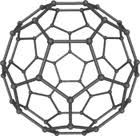
|
"The idea behind the path integral is to create superpositions of all the "virtual" paths or configurations which the spacetime degrees of freedom (metric field variables from General Relativity) can follow as time unfolds. This sum over all the possible configurations is the quantum spacetime." "The second key idea is to constrain the set of geometries which contribute to the sum to those which implement causality." |
 From arXiv Repository | PDF File by Steven Carlip - University of California at Davis
From arXiv Repository | PDF File by Steven Carlip - University of California at Davis
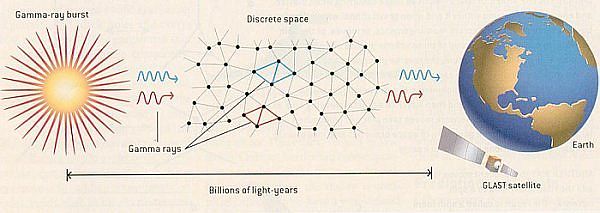
A new model for the structure of spacetime: physical applications
PDF File - by Miguel Lorente - University of Oviedo, Spain | IOP Science
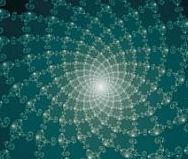
Performing a GOOGLE Image search on string theory will return many images,
each of which is associated with a web page or site.
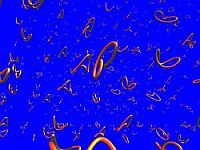


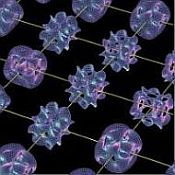

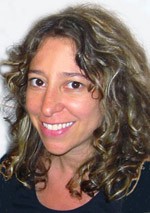
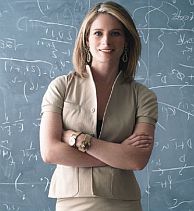
| A very elementary overview of the original Kaluza-Klein theory is presented, suitable for undergraduates who want to learn the basic mathematical formalism behind a revolutionary idea that was proposed one hundred years ago, yet today serves as the template for modern higher-dimensional particle and gravity theories. |
| Many researchers believe that physics will not be complete until it can explain not just the behaviour of space and time, but where these entities come from. |

"Spacetime is but a large-scale manifestation of some more fundamental entity."
"Space and Time can be born and thus can die.1"
From: Barrow, John D.; Pi In The Sky
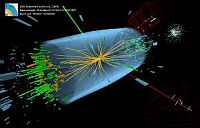
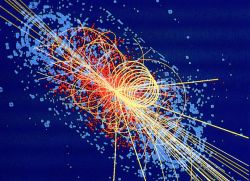
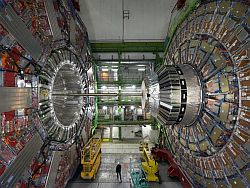
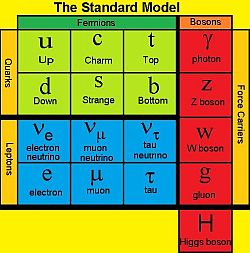
| Starting around 1927, Paul Dirac unified quantum mechanics with the relativistic theory of electromagnetism; the theory of quantum electrodynamics was completed in the 1940s by Richard Feynman, Freeman Dyson, Julian Schwinger, and Sin-Itiro Tomonaga. |
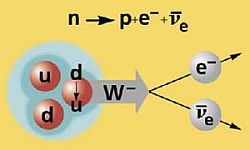
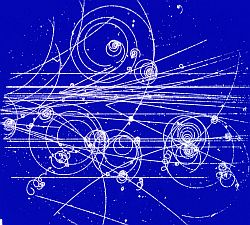

Image search results for structure of sun

As of 2017: "Paul Halpern is a professor of physics at the Saint Joseph’s University and the author of eighteen popular science books, including Flashes of Creation, The Quantum Labyrinth, Einstein's Dice and Schrodinger's Cat, and Synchronicity. He is the recipient of a Guggenheim Fellowship and is a Fellow of the American Physical Society. He lives near Philadelphia, Pennsylvania."
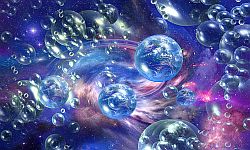

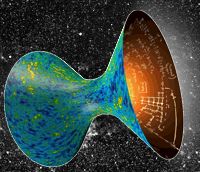

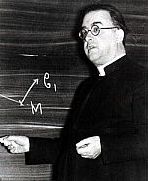






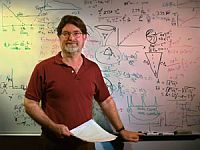
| Excerpt: "The Cosmic Background Explorer (COBE) was a mission to measure the cosmic background radiation. This electromagnetic radiation is presumed to result from the big bang." The infrared- and microwave-detecting COBE measures distant temperatures. |
| The Nobel Prize in Physics 1978 was divided, one half awarded to Pyotr Leonidovich Kapitsa "for his basic inventions and discoveries in the area of low-temperature physics", the other half jointly to Arno Allan Penzias and Robert Woodrow Wilson "for their discovery of cosmic microwave background radiation" |
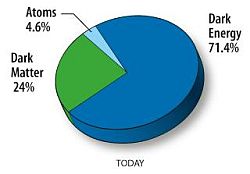
| "In a nutshell, the universe according to WMAP is 13.7 billion years old, plus or minus one percent. It is geometrically "flat," in accordance with the simplest solutions of Einstein's equations, which equate gravity with the bending of spacetime. By weight it is 4 percent atoms, 23 percent dark matter -- presumably, as-yet-undiscovered elementary particles left over from the Big Bang -- and 73 percent "dark energy." |
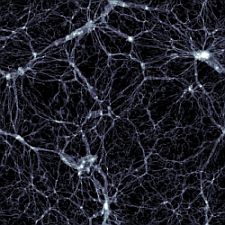

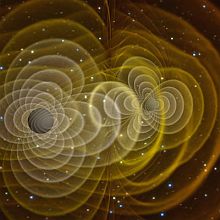
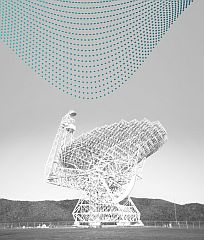
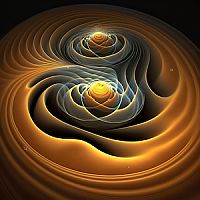

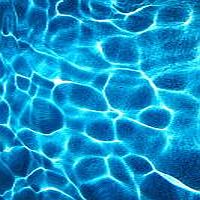
The new paradigm in Cosmology, Astrophysics and Astronomy has shifted:
The Big Bang model/metaphor has been reborn as the Big Gong.
Ripples in spacetime, initiated by what?
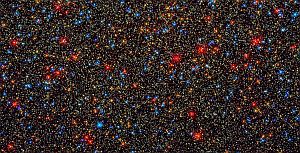
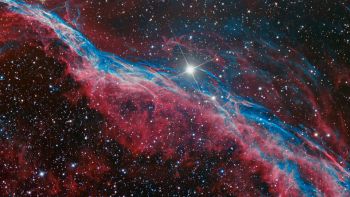



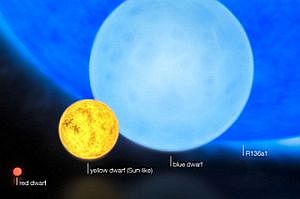
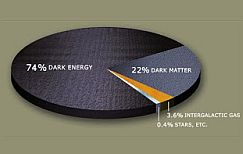
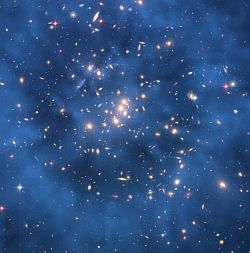

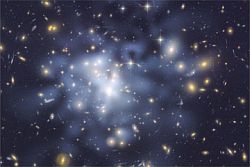
| The purpose of LEVEL5 is to bring together in a single gateway WEB site (where copyrights allow) "original" documents and reviews and/or electronic links to articles of current and lasting interest to cosmologists, particle physicists and extragalactic astronomers. |
| Spearheading the search for the elusive 'dark matter' and even rarer 'dark energy' is Physicist Dr. Richard Massey. As evidence mounts, scientists across all fields agree that basic 'baryonic' material comprises only a tiny percentage of the total amount of 'stuff' in the Universe, but what about everything else? |
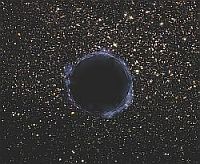


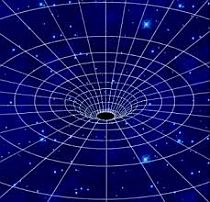

These newsgroup links operate only if your local browser is configured to connect to a news server that carries these newsgroups.
Chemistry
|
All Nobel Prizes in Chemistry
Nobel Prize in Chemistry 2025
Prize announcement and Interview about the Awarded Work | Video (6:12)
The Nobel Prize in Chemistry 2024
The Nobel Prize in Chemistry 2024 | Summary
The Nobel Prize in Chemistry 2024 - Press Release
Nobel Prize in Chemistry 2024 | October 9, 2024 - Nature
The Nobel Prize in Chemistry 2023 | Summary
Scientists share Nobel prize in chemistry for quantum dots discovery | The Guardian
The Nobel Prize in Chemistry 2022 - Summary
The Nobel chemistry prize is awarded to 3 people for their work in attaching molecules
The 2022 chemistry Nobel prize goes to bioorthogonal and click chemistry – as it happened
The Nobel Prize in Chemistry 2021 - Summary
Nobel Prize in Chemistry Awarded to Scientists for Tool That Builds Better Catalysts
Chemistry Nobel awarded for mirror-image molecules | October 6, 2021 - BBC
The Nobel Prize in Chemistry 2020 - Summary
2 Scientists Awarded Nobel Prize In Chemistry For Genome Editing Research
The Nobel Prize in Chemistry 2019 - Summary
Press Release: The Nobel Prize in Chemistry 2019 || Press Release PDF File
Nobel prize in chemistry awarded for development of lithium-ion batteries – as it happened | The Guardian
The Nobel Prize in Chemistry 2018 - Summary
Press Release || Press Release PDF File
Frances Arnold - Innovation by Evolution: The Expanding Enzyme Universe | Video - 1:17:07 - YouTube
Nobel Prize in Chemistry Is Awarded to 3 Scientists for Using Evolution in Design of Molecules
The Nobel Prize in Chemistry 2017
Press Release || Press Release PDF File
Nobel Prize in Chemistry Awarded for 3D Views of Biological Molecules
The Nobel Prize in Chemistry - 2016
The Nobel Prize in Chemistry - 2015
2015 Nobel Prize in Chemistry | October 7, 2015 - Scientific American
Nobel Prize in Chemistry shared by American, Swedish, and Turkish scientists for DNA repair
Nobel prize for chemistry is awarded for mapping how cells repair their DNA -- as it happened
Nobel Prize in Chemistry Awarded to Tomas Lindahl, Paul Modrich and Aziz Sancar
DNA research deployed in war on cancer scoops Nobel prize
The Nobel Prize in Chemistry - 2014
Nobel Prize in Chemistry for Improving Microscopes
Microscope work wins Nobel Prize in Chemistry
The Nobel Prize in Chemistry - 2013
Press Release -- Public Information | PDF File - 1mb
Without Test Tubes, 3 Win Nobel in Chemistry
2012 Nobel Prize in Chemistry Awarded to Robert J. Lefkowitz and Brian K. Kobilka
All Nobel Prizes in Chemistry | Nobel Prize.org
Winners of the Nobel Prize in Chemistry 2012 - 1901 | Nobel Prize Internet Archive
|



